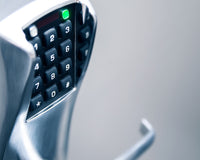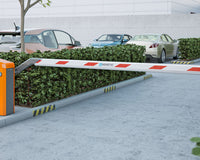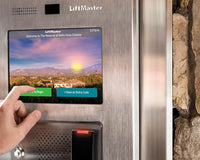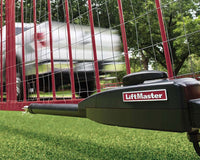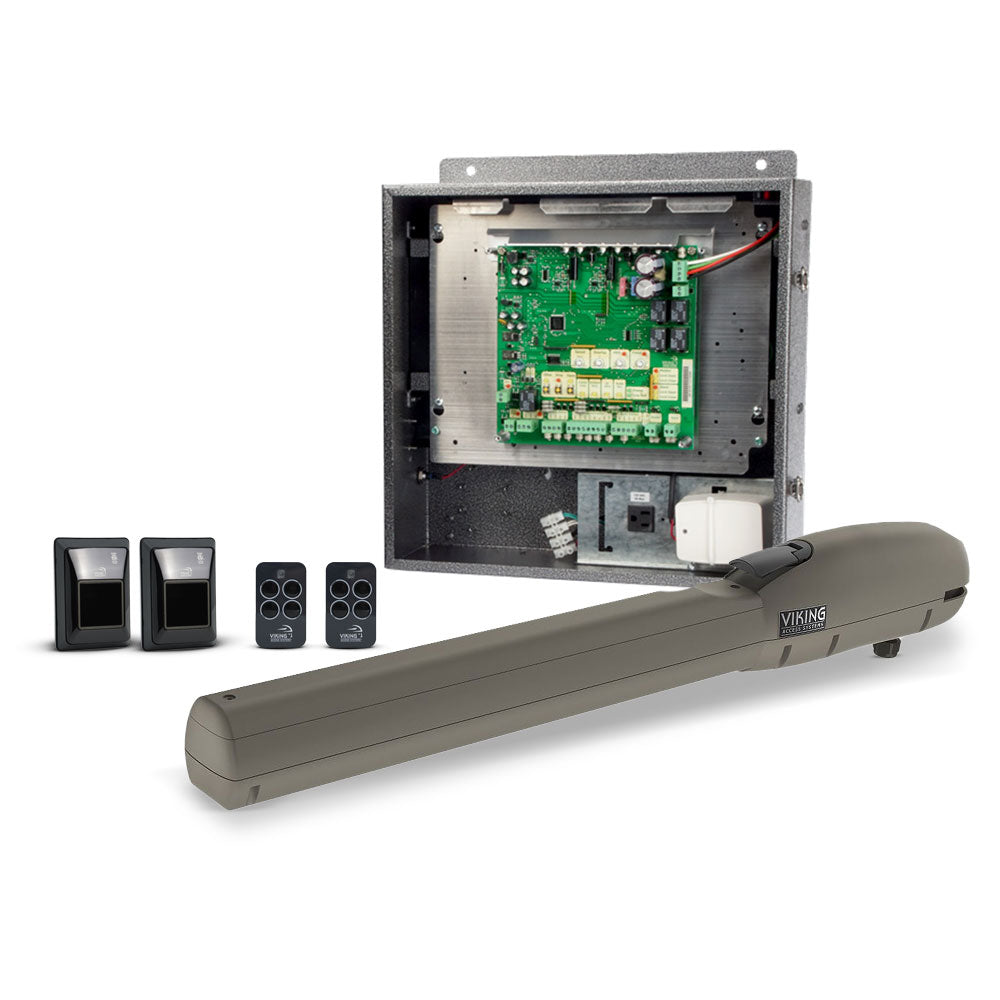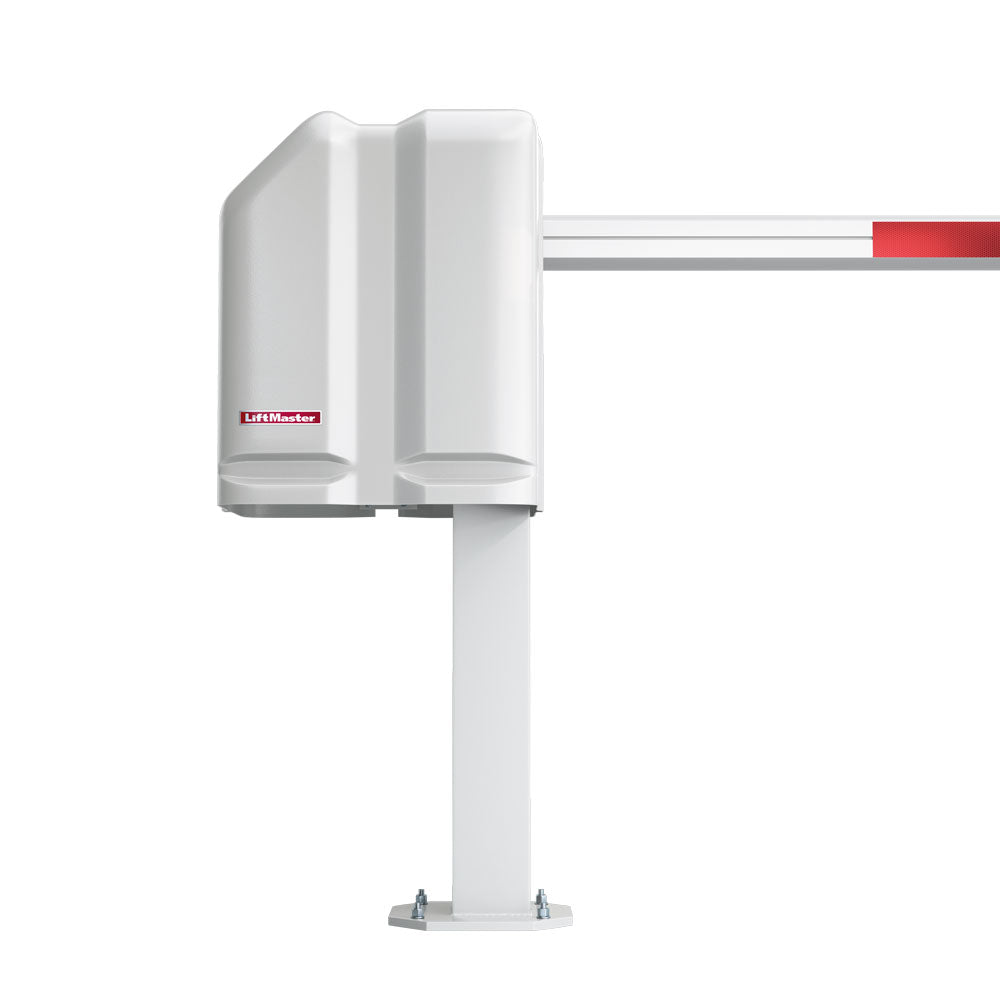Close The Door Behind You - Keeping Your Property Safe With The Right Locking System

A robust and reliable locking system is crucial for businesses, property managers, and homeowners alike. Failing to invest in proper door security can have severe consequences. For instance, a poorly secured door can leave a business vulnerable to burglaries, leading to financial losses and disruptions. Additionally, unsecured doors in residential areas can compromise the safety of residents, putting them at risk of theft or unauthorized access.
Given the myriad of locking system options available in the market, it's essential to choose the most advanced and effective solution. Security has come a long way since the days of traditional metal keys and locks. Now, commercial smart locks and electric door lock solutions are a common occurrence in most commercial settings and even in some large residential spaces.
For maximum security in larger scale commercial and residential properties, the two obvious choices are electric strike door locks and magnetic door locking systems. But how do maglocks work, and what’s the difference between electric strike locks, traditional locks and magnetic strike locks?
In today’s All Security Equipment Blog we’ll be taking a closer look at these magnetic locks and their functionalities. We’ll also be comparing and contrasting their advantages to more analog systems and their electric strike counterparts - in order to once and for all, hopefully, put your mind at ease when you decide to close the door behind you.
Traditional Locks - Reliable But Outdated

Traditional door strikes, often referred to as deadbolts, are the common and familiar type of locking mechanism you’ve probably known all your life. They typically consist of a cylindrical bolt that extends into the door frame when locked, providing a secure barrier against intrusion. These locks are typically operated using a key or a combination, and they come in various styles and finishes to suit different aesthetic preferences.
Some of the often-cited advantages of traditional locking systems include Reliability and Affordability. Traditional locks have a long history of proven reliability and durability. They are generally less prone to mechanical failures compared to some select newer locking technologies; furthermore traditional locks are often more affordable than advanced locking systems, making them a budget-friendly option for many applications.
Regrettably though, the drawbacks of traditional deadbolts long overshadow their advantages. Just some of these include:
-
Limited Access Control: Traditional locks offer basic access control but lack advanced features like remote management or integration with other security systems.
-
Key Management Challenges: Managing keys can be cumbersome, especially in large buildings or properties with multiple users. Lost or stolen keys can pose a security risk.
-
Vulnerability to Forced Entry: While traditional locks provide a degree of security, they can be susceptible to forced entry techniques like drilling or picking.
-
Lack of Automation: Traditional locks require manual operation, which can be inconvenient in certain situations. They do not offer automated features like auto-locking or remote unlocking.
-
Limited Customization: Traditional locks may have limited customization options compared to more modern locking systems, making it difficult to integrate them seamlessly with other security components.
Electric Locks - A Modern Current

An electric strike uses a hinged piece of metal to latch the door into place. With this metal in a locked position, the door cannot operate without an electronic signal. The electronic signal works to move the metal release latch installed inside the door frame, opening the door. The door electric strike lock is triggered by an external wireless item such as a fob, card, key fob or keypad PIN. Electric strike door locks are commonly used on doors that require access control to limit who can open them.
The internal electric strike plate mechanism works with a lock and bolt and an actuator which is responsible for controlling the lock of the door. This moves the metal hinge into place and secures the lock. The electric strike plate is then responsible for triggering the actuator to move and unlock the door, which relies on a power supply.
When it comes to Electric Locks you can expect at least three main positive features in most models:
-
Cost-Effectiveness: Just like their analog counterparts, electric locks are generally more budget-friendly compared to magnetic locks. This cost advantage makes them an attractive option for various home applications - although not necessarily for business or high-security areas, more on that later.
-
One-Sided Security: Electric locks are ideal for scenarios where controlling traffic in one direction is a priority. They secure one side of the door, typically the exterior, making them effective for managing entry and exit points with a unidirectional flow.
-
Enhanced Security During Power Outages: A notable advantage of electric locks is their ability to enhance security even during power outages. When the power turns off for any reason, doors equipped with electric locks remain securely locked. Occupants inside can unlock the door using a panic bar.
But, yet again, when it comes to electric locks there’s also a slew of drawbacks and disadvantages to take into account.
-
Installation Intricacies: The installation of electric locks can be complex, requiring a certain level of expertise. Precise installation is crucial for optimal performance, and hiring a skilled installer is often necessary to ensure the system operates as intended.
-
Power Management Challenges: Managing power effectively is a critical aspect of electric lock systems. Understanding power requirements, ensuring reliable power sources, and selecting the right components require careful consideration. Without proper power management, the system’s reliability may be compromised.
-
Additional hardware required: Because electric strike door locks only secure one side of the door, you’ll need to invest in panic bars or exit hardware for the other side. This ensures that people inside the building can easily and quickly exit in the event of an emergency.
-
Limited application: Electric strike locks aren’t as easily configured to all types of doors. For example, electric strike plates aren’t compatible with doors that have an aluminum frame or a hollow structure.
-
Potential for Interference: Electromagnetic interference (EMI) from other electronic devices can sometimes affect the performance of electric strike locks, leading to malfunctions or unexpected behavior. This can be particularly problematic in environments with high levels of electronic activity.
-
Higher Maintenance Costs: Electric strike locks may require more frequent maintenance and troubleshooting compared to traditional mechanical locks. This can result in increased operational costs over time, especially in large buildings or facilities with multiple electric locks.
Magnetic Locks - Entrance To tomorrow.

Which leads us to objectively the most advanced of the options presented today, MagLocks.
A maglock, also known as a magnetic lock, is a type of electronic lock that uses an electromagnet to keep a door or gate securely closed. Unlike traditional locks that use a physical key to unlock the mechanism, maglocks are controlled by an electrical circuit that activates or deactivates the magnet.
The basic design of a maglock consists of two components: an electromagnet and an armature plate. The electromagnet is mounted on the door frame or wall, while the armature plate is attached to the door itself. When the magnet is energized, it creates a strong magnetic field that attracts the armature plate and holds the door securely in place.
If you want to know about their funcionality in more detail you may click here.
One of the key advantages of maglocks is their ability to provide a high level of security. Because they use an electromagnetic force to keep the door closed, they are much more difficult to bypass than traditional locks. In addition, maglocks are often used in conjunction with access control systems, such as key cards, biometric scanners, or security integration apps to ensure that only authorized individuals can enter a building or restricted area.
Maglocks are also known for their durability and reliability. Because they have no moving parts, they are less prone to wear and tear than traditional locks, and they can often last for years without needing any maintenance or repairs. Additionally, maglocks are designed to release quickly in the event of an emergency, such as a fire or power outage, which can be crucial for ensuring the safety of building occupants.
Maglocks - When And where?

Magnetic Locks can certainly be applied to any type of property perimeter system that may require them - but they are generally expected and used in some areas and industries over others. For example they are commonly used in commercial and industrial settings to secure doors. They are often integrated with access control systems to regulate entry and exit.
Due to their high level of effectiveness at restricting access to sensitive areas, maglocks are ideal for use in various scenarios. There are several situations where the use of a maglock is necessary to ensure adequate security measures, including Government Buildings, Gated Community Perimeters, Data Centers, Hospitals, Entryways to Luxury Amenities and Office Buildings
Another good use of a magnetic lock is a lower-security doorway within a tightly secured area. For example, magnetic locks work well on interior doors where security isn’t a huge concern if the power goes out and the door unlocks.
With all of this in mind, whether you’re working on a new development or updating doors in an older building, deciding between an electric strike or a maglock, consider factors such as:
-
Door location: the door will be placed in the interior vs. exterior, it is expected to deal with high-traffic or low-traffic.
-
Intended function: consider the security level of the access point, available access control, and if it will operate as an emergency exit.
-
Safety and security concerns: keep up to date with your region’s fire safety regulation, intrusion prevention systems, and tendencies towards vandalism.
-
Budget: know your initial cost, long-term costs, and consider additional hardware you might have to instal and purchase
Advantages Of MagLocks.
To put it bluntly, when it comes to be compared with its electrical and analog counterparts the Magnetic Lock’s advantages far outweigh the competition. With most brands of Maglocks you can expect:
-
Low maintenance: Commercial magnetic door lock systems, once installed, are incredibly reliable and require little maintenance. Because they leverage electromagnetic energy, there’s often less wear-and-tear on the magnetic locking mechanism when compared to electric strike plate locks.
-
Strength and durability: Magnetic lock systems and electric door magnets are known for their incredible durability and strong holding force. They are very difficult to manually force open and can withstand wear and tear from thousands of uses.
-
Easy installation: Compared to electric strike locks and some types of mechanical locks that require specialist skill, an electromagnetic door lock system is relatively simple to install. It is still recommended to work with a professional for installation, but the straightforward configurations can help reduce costs.
-
High Compatibility Rate: Magnetic locks are flexible and can be configured to most types of doors, unlike their electric counterparts. One of the best use cases for a mag lock door system is for securing glass doors.
-
Fail-safe designs: Maglocks are designed to fail in the open position in the event of a power failure, which means they can be used in emergency exits and other areas where safety is a concern.
-
Remote access control: Maglocks can be controlled remotely, which makes them a convenient option for those who need to grant access to certain areas from a distance.
-
Adaptability: Magnetic locks offer a high degree of adaptability. The holding force of the lock can be easily adjusted by altering the current. This feature allows you to fine-tune the lock to meet specific security requirements, providing a tailored solution for your needs.
-
Security on Both Sides: A notable advantage of magnetic locks is their ability to secure both sides of the door. This dual-sided security feature enhances overall access control, making maglocks suitable for diverse environments where controlling access from both directions is crucial.
The Maglock Solution For Your Needs
Maglocks offer a superior level of security, durability, and convenience, making them an ideal choice for property managers seeking to enhance the protection of their buildings. Compared to traditional and electric locks, maglocks provide a stronger barrier against forced entry attempts, while also being less susceptible to mechanical failures and power outages. By investing in maglocks, property managers can significantly improve the safety and security of their properties, safeguarding both assets and occupants.
If you still have any questions regarding if maglocks are right for your needs, or simply want to check out some of the leading brands of the industry, our customer service team is more than ready to help right now!


